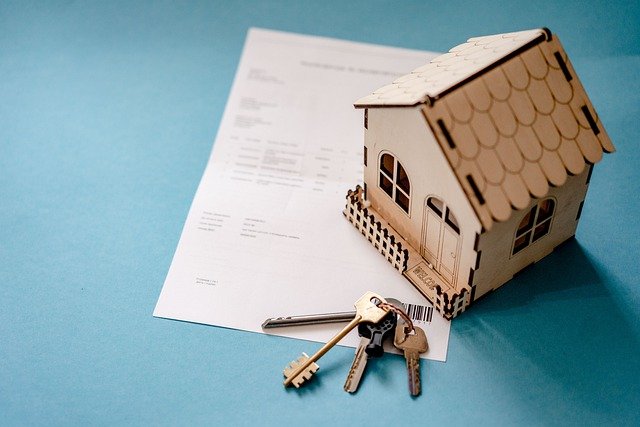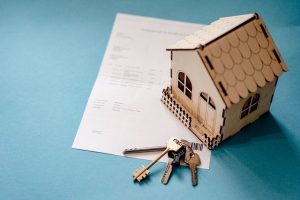
Refinancing your mortgage is like starting all over on your mortgage plan. It could allow you to access lower mortgage rates or pay lower monthly remittances. However, not all mortgages qualify for traditional financing options, particularly those who don’t have much equity on their real estate property.
Here’s where unconventional housing programs like HARP come into the scene. This guide examines these unconventional housing programs, answering common questions like ‘what is a HARP replacement program?’; and refuting common misconceptions about the subject.
What Is a HARP Replacement Program?
The story of the Home Affordable Refinance Program (HARP) or the replacements would be incomplete without reference to the real estate industry crash in 2008/2009. The US government introduced the program in 2009 to relieve struggling homeowners whose property’s equity fell against their mortgage remittances. Specifically, the program helped homeowners with a high loan-to-value (LTV) ratio or negative equity.
Equity here refers to the difference between the amount you owe and the value of your property. For instance, if you owed $560,000 over a home worth $500,000, you’d have negative equity of $60,000. Lenders usually use the loan-to-value (LTV) ratio in expressing negative equity as a percentage.
From the above instance, the homeowner has a 112% LTV ratio ($560,000/$500,000 = 1.12 or 112%). That implies the mortgage’s balance is 12 percentage points more than the property’s worth. Before the introduction of HARP, US homeowners couldn’t access refinancing from traditional lenders if they had a high LTV ratio.
However, the US government discontinued the HARP program in 2018 and replaced the program with two others. The new replacement programs are the Fannie Mae’s high loan-to-value (LTV) refinance option; and the Freddie Mac’s Enhanced Relief Refinance.
So, what is a HARP replacement program? Fannie Mae and Freddie Mac, the two government-sponsored enterprises that purchase mortgages and resell them at cheaper rates to homebuyers, are the replacement programs for the now halted HARP program. These two programs benefit people who already own mortgages, albeit with high ‘loan-to-value ratios’ or ‘negative equity.’
Benefits of the HARP Replacement Programs
The HARP replacement programs aim to provide financial relief to upside-down borrowers (that is, borrowers with negative mortgage equity). Here are some ways the HARP replacement programs benefit homeowners with negative equity compared to the original program or traditional refinancing options.
1. You Can Use HARP Replacement Programs More Than Once
The initial HARP program allowed borrowers to refinance their loan (for example, to reduce their mortgage rates) only once during the loan’s span. However, the new replacement financing options enable borrowers to refinance their property as long as it appears financially reasonable and the applicants qualify.
2. Your Mortgage Insurance Transfers to a New Mortgage
Another benefit of the HARP replacement programs is that you can transfer your current mortgage insurance to a new mortgage. If you put down below 20% on your mortgage, you’re likely paying for private mortgage insurance (PMI). Even if your home’s worth has dipped, you won’t require a new mortgage insurance coverage under the HARP government program reviews, as the existing PMI transfers onto the new loan.
3. Less Paperwork
Besides the opportunity to refinance your loan more than once and transfer your mortgage insurance to a new mortgage, there’s also less paperwork involved in a HARP replacement program. Lenders have less paperwork to do in documenting income or assets as much as they have to in traditional refinancing.
4. Appraisal Waivers
Under the current mortgage relief refinance program, it’s possible to get appraisal waivers under certain conditions. Depending on your property’s geographical location and the results of automated value analysis, you may not get waived from an appraisal. Such a waiver could cut up to $400 on the cost of an average home appraisal.
5. No Credit Score Requirements
The HARP replacement programs also don’t have a credit score limit they require from applicants. Most of the time, lenders won’t access you based on your debt-to-income (DTI) ratio. That is, based on the percentage of your monthly debt against your gross monthly income.
6. Straightforward and Quick Processing
Lastly, HARP replacement programs don’t only have fewer processing requirements compared to traditional refinancing options. It’s often faster to process a high LTV refinancing plan than standard refinancing options.
HARP Program Replacement Qualifications
Fannie Mae and Freddie Mac, the government-sponsored enterprises supporting America’s mortgage industry, created two HARP replacement programs. One general qualification for the HARP replacement programs is that your loan must get backing from Fannie Mae or Freddie Mac. In the following paragraphs, we’ll highlight the HARP replacement program qualifications for the two replacement programs.
The Fannie Mae HIRO Program
The Fannie Mae High Loan-To-Value Refinance Option (HIRO) program lets homeowners who own a loan backed by Fannie Mae refinance regardless of a high LTV ratio. Furthermore, the HIRO program also provides special provisions for upside-down homeowners with unique situations. You qualify for the HIRO program if:
- You have a Fannie Mae-backed loan
- You’ve had no more than one late payment within the last 12 payments
- Your current loan is no later than October 1, 2017
- You have been early on your mortgage payments in the previous six months
- You don’t have above 3% equity (for a single-family primary residence)
- You’ve had your current mortgage for up to 15 months
Next, we consider the Freddie Mac program and the attendant qualifications
The Freddie Mac FMERR Program
The Freddie Mac Enhanced Relief Refinance (FMERR) program helps to assist underwater borrowers whose loans are among those backed by Freddie Mac. Some of FMERR’s advantages include lower mortgage payments and quicker payoffs. Meanwhile, there are no minimum credit score requirements to assess the FMERR program.
Homeowners can access the FMERR program if:
- They have a Freddie-Mac-backed loan
- Their current mortgage is at least 15 months old
- They have been early in paying their existing mortgage within the last six months
- They don’t roll above $5,000 in closing costs into the loan amount and receive not more than $250 cash back
Above are the general requirements of the HARP replacement programs. But knowing the general requirements for a Fannie Mae or Freddie Mac program might not be sufficient to arm you with the necessary information. We’ll run through some misconceived requirements for the HARP programs.
What You Don’t Need for a HARP Program
Misinformation about HARP program requirements confuses property owners and could debar some from benefiting from the program. Meanwhile, some homeowners think the HARP program seems too good to be accurate and has extremely demanding requirements that only a few mortgage owners are eligible for.
Regardless of what someone else may have told you, qualifying for the HARP replacement programs (also called HARP 2.0) is relatively straightforward. HARP 2.0 even further reduced the eligibility requirements and simplified the requirements for some applicants. The following is an overview of things you don’t require for a successful HARP application.
1. Minimum Loan Amount
You can’t be disqualified from a HARP program based on a low loan amount or outstanding loan balance. Nevertheless, the programs apply to conventional conforming loans, and HARP 2.0 doesn’t apply to jumbo mortgages, that is, loans worth about $417k and above.
2. Only for a Primary Residence
The mortgaged property in question doesn’t have to be your primary residence. It’s possible to access HARP refinancing for your second home if it’s a one-unit residence, like a single-family home or a condominium unit. Homeowners may also refinance a one-to four-unit investment property.
3. Minimum Credit Score
There’s no minimum credit score to get financing for HARP 2.0. Therefore, a low credit score won’t disqualify you from getting a HARP refinancing. However, some HARP-approved lenders have minimum credit scores for homeowners who apply for a HARP refinance through them.
4. Maximum Loan-to-Value Ratio
Earlier, HARP placed an upper limit of an LTV ratio of 125% for fixed mortgages. However, the replacement programs have nearly eliminated anything that has to do with a maximum LTV ratio limit.
Suppose you refinanced into a fixed-rate mortgage; HARP 2,0 doesn’t cap your new LTV ratio. However, if the new mortgage runs on an adjustable rate, the highest LTV ratio requirement is 105%.
Bear in mind that although HARP doesn’t place an LTV ratio limit, some lenders peg the upper LTV ratio limit at 125% to reduce their underwriting risk. Additionally, it’s possible to qualify for a refinance on a second mortgage as long as the double mortgage holder agrees to remain in a junior lien position with the first mortgage holder.
FAQs
Having seen a broad overview of the HARP programs, we’ll quickly answer some commonly asked questions surrounding the subject. Like many homeowners, you may have asked, ‘Can you refinance after a HARP loan?’; ‘How many times can someone use the HARP program’; etcetera. Here are some helpful answers.
Will I Need Mortgage Insurance?
Suppose you paid mortgage insurance to your lender for your current loan. You’ll have to pay the same insurance fees after getting a refinance. However, if there’s no mortgage insurance on your property, HARP won’t ask you to get HARP mortgage insurance.
Can You Refinance After a HARP Loan?
You can refinance through the HARP program once, with one exception. However, if you refinanced under HARP through Fannie Mae between March and May 2009, you may qualify to apply for refinancing again.
Maximum Number of Times to Use the HARP Program?
‘How many times can you use the HARP program?’ Fortunately, you can apply for the Freddie Mac or Fannie Mae refinancing as often as you want. Meanwhile, you could only apply once for a HARP refinancing. Take note, though, that you can’t refinance again if you benefited from HARP through the HARP 2.0 programs.
In Conclusion
There you have it. By now, you’d have clear answers to questions like what is a HARP replacement program or how many times you may refinance a property. Applying for a HARP refinancing isn’t as complex or challenging as many suppose.
Upside-down borrowers with the right qualifications can readily get a mortgage refinancing from two government-sponsored enterprises – Fannie Mae or Freddie Mac programs – and restart their mortgage all over.





